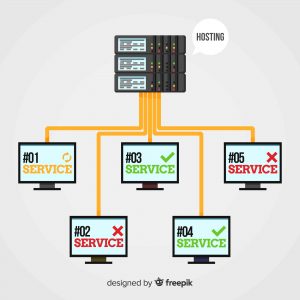
As a VPS developer, managing multiple instances is an integral part of your responsibilities. Whether you’re overseeing a complex infrastructure or juggling various client projects, efficient management of multiple VPS instances is crucial for smooth operations and optimal performance. In this article, we will explore valuable tools and techniques that can help you streamline your workflow and ensure efficient management of your VPS instances.
Utilize a Centralized Management Console
To simplify the management of multiple VPS instances, consider using a centralized management console. According to a survey conducted by Sysdig, 58% of DevOps professionals utilize management consoles to manage their containers and virtual machines. These consoles provide a unified interface that allows you to monitor and control multiple instances from a single dashboard. Popular options include Virtualizor, Proxmox, and Virtualizor Cloud Panel. These tools offer features like resource monitoring, one-click deployment, and centralized backups, making it easier to manage and maintain multiple VPS instances efficiently.
Automation with Configuration Management Tools
Configuration management tools like Ansible, Puppet, and Chef can significantly enhance your ability to manage multiple VPS instances. A report by Puppet states that organizations using configuration management tools experience 85% fewer outages and recover from incidents 168 times faster. These tools allow you to automate the configuration, deployment, and maintenance of your instances. By defining infrastructure as code, you can easily replicate configurations across multiple instances, saving time and reducing human error. Additionally, configuration management tools provide version control and ensure consistency in your infrastructure, making it easier to manage changes and updates.
Implement Containerization and Orchestration:
Containerization and orchestration platforms such as Docker and Kubernetes can be invaluable when managing multiple VPS instances. A study conducted by CNCF reveals that 80% of organizations using containers have increased their use of container orchestration platforms. Containers enable you to package applications and their dependencies into portable units, making it easier to deploy and manage across instances. With orchestration tools like Kubernetes, you can automate the deployment, scaling, and management of containerized applications, providing a flexible and scalable infrastructure for your VPS instances.
Monitor and Optimize Resource Usage
Monitoring the resource usage of your VPS instances is crucial for efficient management. A survey by Datadog found that 76% of respondents monitor resource utilization to improve application performance. Tools like Nagios, Zabbix, and Grafana enable you to monitor key metrics such as CPU utilization, memory usage, and network traffic. By identifying resource bottlenecks and optimizing resource allocation, you can ensure optimal performance and avoid potential issues. Additionally, implementing load balancing techniques, such as distributing traffic across multiple instances, can further enhance performance and reliability.
Implement a Backup and Disaster Recovery Strategy
Managing multiple VPS instances also entails ensuring the safety and availability of your data. Implementing a robust backup and disaster recovery strategy is essential. According to a study by Acronis, 90% of businesses experience downtime, and the average cost of a single downtime incident is $80,000 per hour. Regularly backing up your instances and storing backups in remote locations or cloud storage ensures that you can quickly restore your VPS instances in the event of a failure or data loss. Tools like rsync, Bacula, and Duplicati can help automate backup processes and provide reliable backup solutions.
Streamline Deployment with DevOps Practices
Adopting DevOps practices can significantly improve the efficiency of managing multiple VPS instances. According to the State of DevOps Report, high-performing organizations deploy code 46 times more frequently and have a change failure rate 7 times lower than their peers. By combining development and operations workflows, you can automate deployment processes, implement version control, and foster collaboration between teams. Utilize continuous integration and deployment (CI/CD) pipelines to automate the testing, packaging, and deployment of your applications across multiple instances. Tools like Jenkins, GitLab CI/CD, and Travis CI can assist in setting up these pipelines and streamline your development workflow.
Effectively managing multiple VPS instances requires the right set of tools and techniques. By utilizing a centralized management console, leveraging automation with configuration management tools, implementing containerization and orchestration, monitoring resource usage, implementing a backup strategy, and streamlining deployment with DevOps practices, you can efficiently manage your VPS instances and ensure optimal performance and reliability. By embracing these tools and techniques, you can streamline your workflow, reduce manual effort, and focus on delivering exceptional services to your clients or users.



